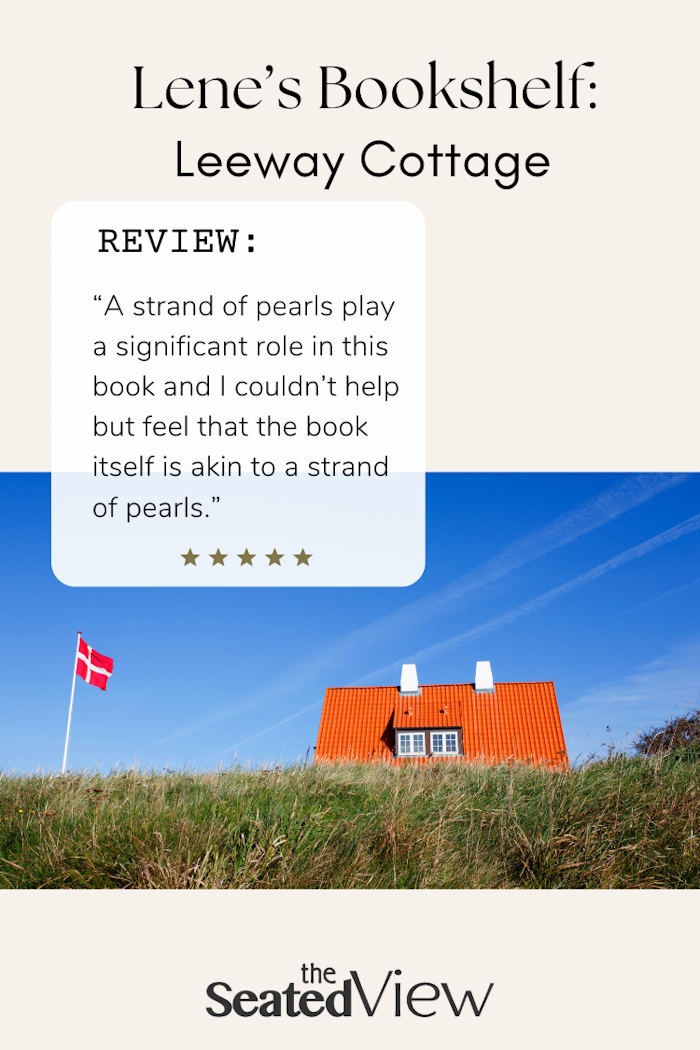Lene’s Bookshelf: A Review of Leeway Cottage

Updated September 19, 2024
I just finished reading Leeway Cottage by Beth Gutcheon. I heard about it some place I can’t remember and given the theme of Denmark during World War II, I naturally had to read it. Unfortunately, the English audiobbok version is only available in abridged format, so my take on it will likely be coloured by that. And by the way? It took me a while to find that word – all that was in my mind was ‘tainted’. I hate abridgement. I fail to understand why anyone in their right mind would wish to read a novel that has been amputated. I also fail to understand why it’s OK to abridge. There’s a reason for all those words, people! The writer put them there with great deliberation to paint a picture with words – I mean, no one abridges Van Gogh or Monet, do they?
Back to the main track…
The book is the story of two people, a marriage and a war, and spans about 80 years. Poor little rich girl Sydney Brant marries Laurus Moss, a Dane. When the Germans invade and occupy Denmark, Laurus feels compelled to go to London to work with the Danish resistance. When he returns home after the war, we witness the growth of their marriage and family, all linked by entries in the guest book of the family’s summer home (the Leeway Cottage of the title).
As I was reading, I was sure that the author was Danish or married to a Dane, as she just about nails us and the Danish character traits. It was odd to feel so known in an English-language novel. It was even odder to realize that so much of what I thought was unique to me and my family, is actually a reflection of a national characteristic. That’ll teach me to feel all special!
My favourite part of the book was the living history lesson (so to speak) of Denmark during the war. Exceptionally well researched, it tells a story little known outside of Denmark or the Jewish community, a story quite different from the experiences of other countries. This is stuff I’ve grown up with, have been told by my parents and grandparents, have re-lived every year when we commemorate the occupation on April 9 and celebrate the liberation on May 4. Hearing it again made me so homesick. (On her website, Beth Gutcheon has posted more information on the topic)
The book has its problems. Some, but not all, likely the result of being abridged – it has an “and then this happened and then this and then this” feeling of recitation at times, which may also be a result of the sprawling nature of the story. However, Gutcheon can describe moments and emotions in a way that touches you unexpectedly. This makes the book itself feel very Danish. It is in many ways very matter of fact, but Gutcheon has an ability to capture a moment so subtly, you don’t notice the heartbreak until you realize you’re weeping in the park. That’s very Danish – practical and matter-of-fact on the surface, while all the big things happen at a barely noticeable level, with a quiet courtesy and dignity that might make it near-impossible for people not raised in the emotional vernacular to understand what’s going on.
A strand of pearls play a significant role in this book and I couldn’t help but feel that the book itself is akin to a strand of pearls. The telling of sequential events forms the strand, the foundation, while the moments that make up a life shimmer like perfect pearls along it.

Read More
Discover what else I've been writing about...















